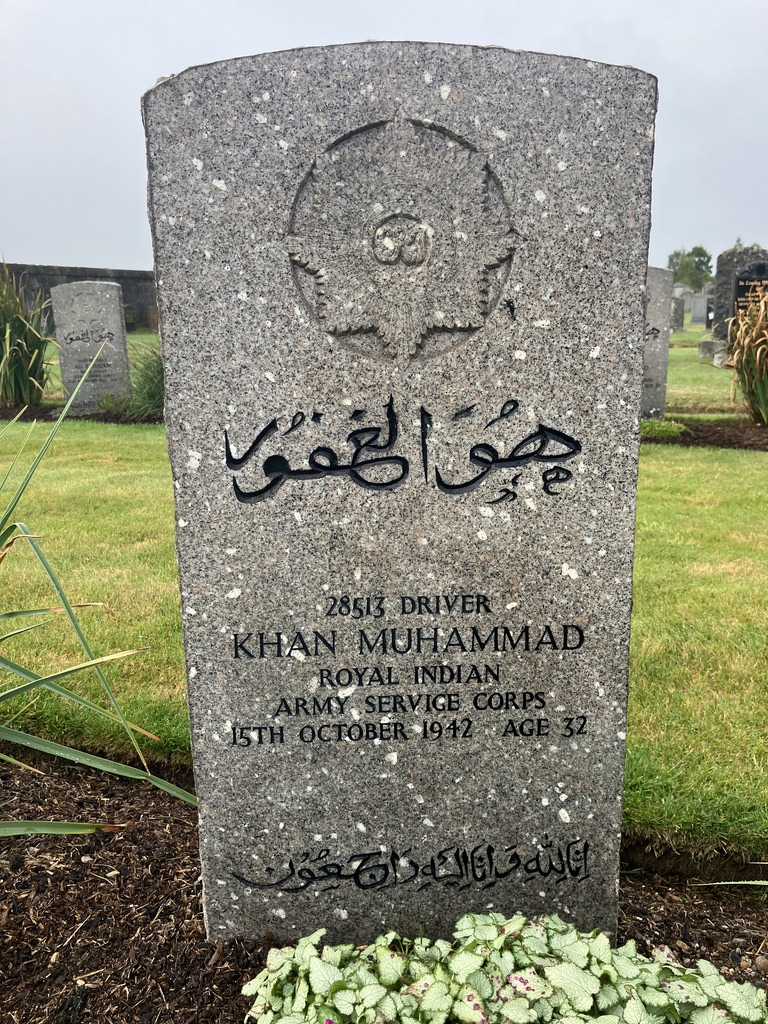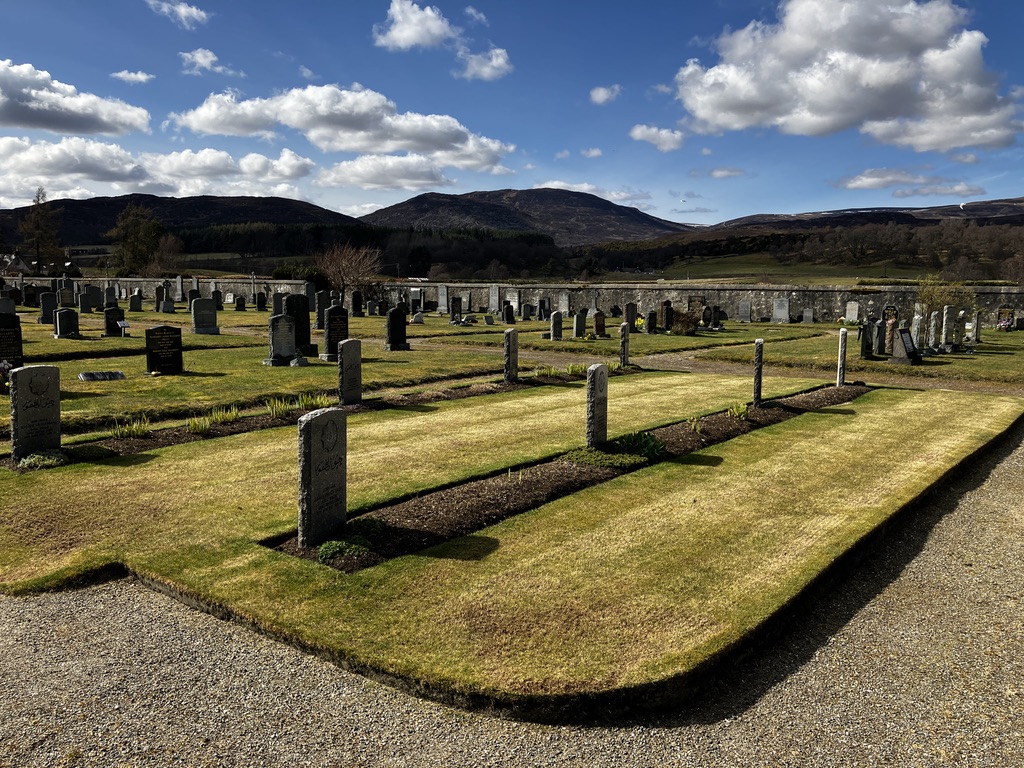|
Name: |
Khan Muhammad |
|
Rank: |
Driver |
|
Service number: |
28513 |
|
Regiment: |
Royal Indian Army Service Corps – Force K6 – 3 Mule Coy. |
|
Date of death: |
15 October 1942 Aged 32 |
|
Place of death: |
Cairngorm Hills, Kingussie |
|
Buried Commemorated |
Kingussie Cemetery Force K6 Memorial Kingussie |
Son of Fakhar Din and Jan Begum, of Jawra, Rawalpindi, Pakistan and husband of Mirza Jan, of Jawra. His deathregistration shows his age as 41 years. Hi father Fakhar Din is described as a farmer. His cause of death is given as shock following exposure on military duty. His death was certified by J.W.A. Parsons, Indian General Hospital. His death was registered by a Captain, Commanding Officer, 3 Mule Coy., R.I.A.S.C.
The inscriptions of Khan’s gravestone, in Arabic, reads “Ho Val Ghaffoor – He, the Forgiving One” and below from the Quran “Inna Lillahi Wa Inna Ilayhi Raji’oon – Indeed we belong to Him (God) and Indeed we return to Him.”


It was reported that Driver Khan Muhammad was in No. 3 Coy Royal Indian Army Service Corps. On 14th October 1942 when he and 178 men and 243 mules/horses from No. 3 Coy joined with 157th Brigade for a two-day training exercise. This involved a route from the camps near Aviemore up Gleann Einich to a bivouac at the north end of the loch. The next day was bitterly cold, with gales, rain, sleet and mist. The company climbed up a track onto the plateau at over 3000 feet before heading down the path to Achlean in Glen Feshie and then back to camp.
On their return they reported at 21:30 that one soldier was left on the hill in a state of collapse. There is no explanation as to why the man was not helped down. A search was organised the following day, 16th October, presumably because of the need to wait for daylight.
A search party from 157 Field Ambulance Royal Army Medical Corps found the body of Khan Mohammad who had died of exposure at the head of Coire Ruadh on the north-west flank of Carn Ban Mor (3443 feet).
The War Diary recorded that “the body was not clothed in the full scale of mountain warfare clothing, contrary orders”. Today this irrational removal of clothing is recognised as a symptom of hypothermia. The body was recovered to Aviemore and buried at Kingussie on 18th October.
A ‘lessons learned’ report states that the men were not properly fed and their clothing was inadequate for the severe wind and wet encountered.